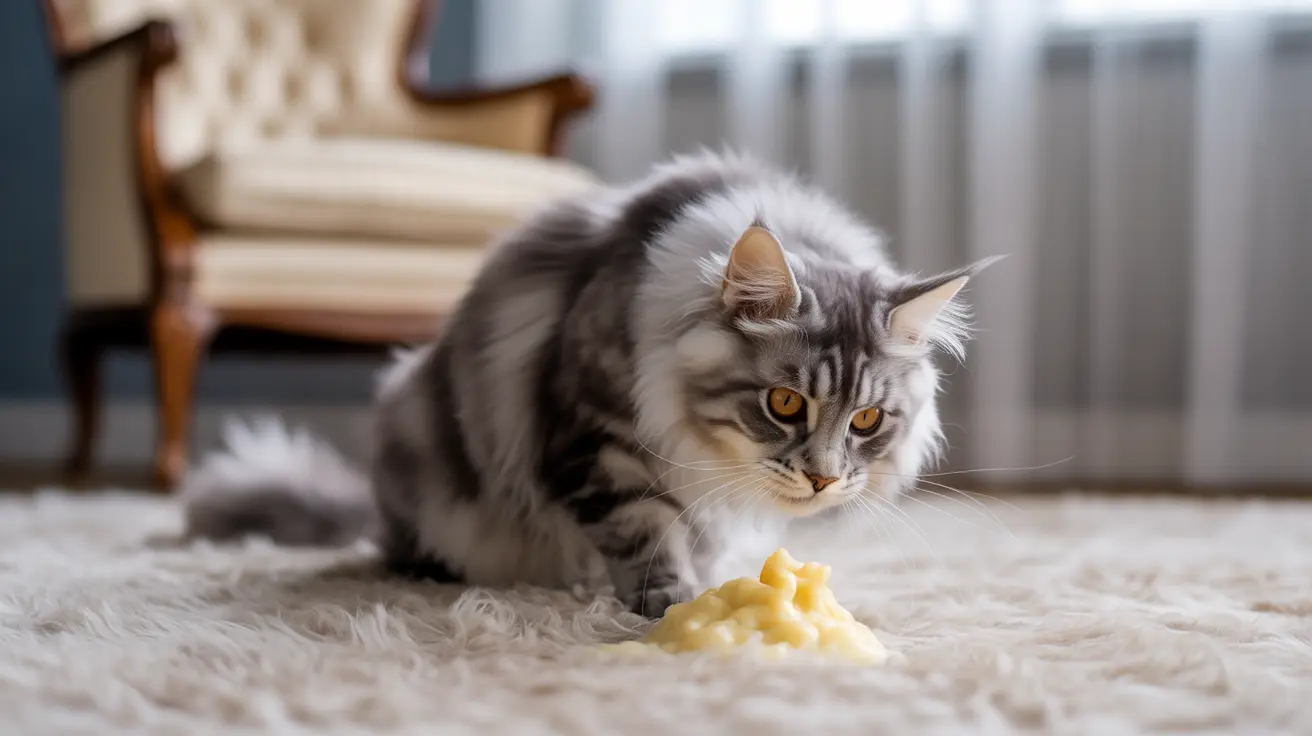As a cat owner, understanding what different colors of cat vomit mean can help you quickly identify potential health issues and know when to seek veterinary care. While occasional vomiting is common in cats, the color, consistency, and frequency can provide crucial information about your pet's well-being. This comprehensive guide will help you decode what your cat's vomit color might indicate about their health.
Normal vs. Concerning Vomit Colors
Clear or Foamy Vomit
Clear or white foamy vomit is often the least concerning type. This usually occurs when cats vomit on an empty stomach or after drinking too much water. However, if this happens frequently, it could indicate:
- Digestive tract irritation
- Motion sickness
- Early stages of gastritis
- Food allergies
Yellow or Bile-Colored Vomit
Yellow vomit typically contains bile and occurs when a cat hasn't eaten for several hours. While occasional yellow vomit isn't usually cause for concern, frequent episodes might suggest:
- Inflammatory bowel disease
- Food sensitivities
- Liver problems
- Empty stomach syndrome
Brown or Food-Colored Vomit
Brown vomit often contains partially digested food and is common after eating. However, dark brown or coffee-ground appearance might indicate:
- Bleeding in the upper digestive tract
- Severe stomach inflammation
- Foreign body obstruction
- Ulcers
Red Flag Colors Requiring Immediate Attention
Red or Pink Vomit
The presence of red in your cat's vomit usually indicates fresh blood, which could be caused by:
- Trauma to the digestive tract
- Poisoning
- Severe inflammation
- Upper GI bleeding
Black or Dark Vomit
Black or very dark vomit often contains digested blood and requires immediate veterinary care. This could indicate:
- Serious internal bleeding
- Severe ulcers
- Advanced digestive disease
- Potential poisoning
Associated Symptoms to Monitor
While vomit color is important, other symptoms can help determine the severity of the situation:
- Lethargy or weakness
- Loss of appetite
- Weight loss
- Diarrhea
- Excessive thirst
- Changes in behavior
When to Contact Your Veterinarian
Seek immediate veterinary care if you notice:
- Blood in vomit (red or black)
- Frequent vomiting (more than once per day)
- Vomiting accompanied by other concerning symptoms
- Unusual colors like green (unless plant material was consumed)
- Any dramatic change in vomiting patterns
Prevention and Management
To help reduce vomiting episodes:
- Feed smaller, more frequent meals
- Use slow-feed bowls if your cat eats too quickly
- Keep harmful plants and substances out of reach
- Maintain regular grooming to prevent hairballs
- Schedule regular veterinary check-ups
Frequently Asked Questions
What does the color of my cat's vomit indicate about their health?
The color of your cat's vomit can indicate various health conditions. Clear or white vomit usually suggests minor issues, yellow indicates bile, while red or black vomit requires immediate veterinary attention as it contains blood.
When should I be worried about yellow or green cat vomit?
Yellow vomit is concerning if it occurs frequently or is accompanied by other symptoms. Green vomit should be evaluated unless you're certain your cat ate plants, as it could indicate serious issues like poisoning or blockages.
How do I know if blood in my cat's vomit is an emergency?
Any blood in vomit (red, pink, or black) should be treated as an emergency. Fresh blood appears red or pink, while digested blood looks like coffee grounds and appears black.
Can different vomit colors help identify if my cat has eaten something toxic or harmful?
Yes, unusual colors or sudden changes in vomit color can indicate toxin ingestion. Green, blue, or oddly colored vomit may suggest your cat has consumed something harmful.
How can I track and describe my cat's vomit to help my veterinarian diagnose the problem?
Take photos, note the frequency, color, and consistency of vomit, and document any accompanying symptoms. Record what and when your cat last ate and any possible exposure to unusual substances.






